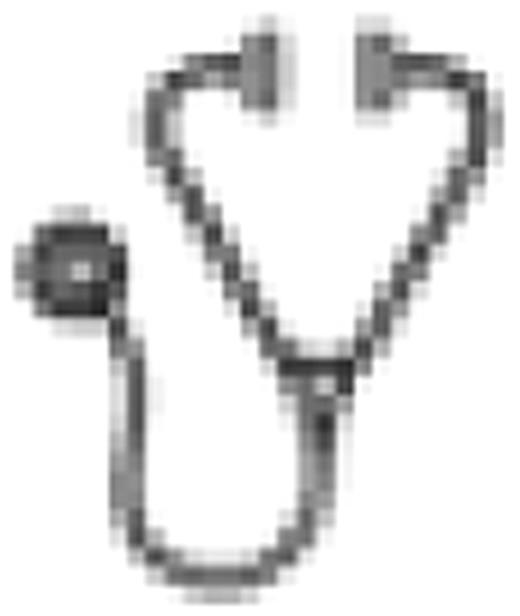Abstract
Abstract 2930
MDS is characterized by recurrent chromosomal abnormalities that reflect the underlying genomic instability of the disease and help to predict clinical prognosis. Abnormalities of chromosome 17 have been described previously in MDS and AML and may have some association to prior exposure to cytotoxic therapy. Abnormalities of the p53 gene, which is located in the short arm of chromosome 17 (17p), have been discovered in the non-deleted allele in a large proportion these cases – suggesting an association and likely contributing to the pathogenesis of this subgroup. Here we present the clinical characteristics, prognosis, and response to therapy of patients (pts) with MDS with and without chromosome 17 abnormalities in our single center experience.
We analyzed our records for cases of MDS referred to MD Anderson Cancer Center from 2000–2009. Of the 1638 cases of MDS examined, 88 (5.4%) had evidence of any chromosome 17 abnormality (abnl). The specific chromosome 17 abnormalities were: 17p- in 8 (9%); der 17 in 1 (1%); -17 in 78 (89%); and 17p-, -17 in 1 (1%). In terms of the complete karyotype, the pts could be grouped as: 17 abnl with complex (95%), 17 abnl with -5 or -7 (94%), and 17 abnl non-complex (5%). There were no cases with an isolated 17 abnl. The median age of these pts with chromosome 17 abnormality (cohort A) was 67 yrs (range 16–87), compared to 67 (13-94) in the pts without chromosome 17 abnormality (cohort B, n=1550). The MDS diagnoses by WHO in cohort A were RA, MDS-U in 23 (26%), RAEB in 64 (73%), and 5q- in 1 (1%) compared with 47%, 52%, and 1% in cohort B respectively (p=0.001). Stratification by IPSS (International Prognostic Scoring System) in cohort A revealed 0 (0%) with low risk, 8 (9%) with intermediate-1 (INT-1), 56 (64%) with INT-2, and 20 (23%) with high risk compared with 19%, 40%, 29%, and 9% in the respective IPSS groups in cohort B (p<0.0001). The median bone marrow blast percent in cohort A was 7 (0-19) vs. 4 (0-19) in cohort B (p=0.003). In cohort A, 29 pts (33%) had [0-4% marrow blasts], 38 (43%) had [5-10% blasts], and 21 (24%) had [11-20% blasts] compared to 51%, 26%, and 20% in the respective groups in cohort B (p=0.001). Abnormality in chromosome 17 was highly associated with a chromosome 5 or 7 abnormality, with 83 (94%) of cases having both, compared to only 27% of cases in cohort B having -5 or -7 (p<0.0001). Chromosome 17 abnormality was also strongly associated with a concurrent complex karyotype (defined as ≥ 3 abnormalities) with 84 pts (95%) in cohort A having both compared to only 21% in cohort B having a complex karyotype (p<0.0001). Pts in cohort A were more likely to have a history of prior malignancy 55% vs. 34% in cohort B (p<0.0001), whereas 50% of pts in cohort A were classified as treatment-related MDS compared in only 25% in cohort B. Pts were treated with hypomethylating agents, intense chemotherapy, or other and limited response data were available. The complete response rates in cohort A for the respective treatments were 58% (7/12), 57% (8/14), and 67% (2/3) compared with 50%, 44%, and 29% in cohort B. The median overall survivals for the following cytogenetic groups: diploid, complex without 17 abnormality, -5/-7 without 17 abnormality, and any 17 abnormality were 24 months, 13 months, 10 months, and 7.7 months, respectively (p<0.0001).
Pts with MDS with a chromosome 17 abnormality represent a small percentage of the total cases. However, they are characterized by a high risk disease with elevated bone marrow blasts, complex/adverse cytogenetics, association with prior therapy, and a relatively poor survival. There is an association with chromosome 5 and 7 abnormality and may suggest cooperation in the pathogenesis. Given the high incidence of biallelic p53 loss in this group of pts, alternative antineoplastic therapies which circumvent the requirement for p53 function need to be developed.
No relevant conflicts of interest to declare.

This icon denotes an abstract that is clinically relevant.
Author notes
Asterisk with author names denotes non-ASH members.

This feature is available to Subscribers Only
Sign In or Create an Account Close Modal